Search
Search Results
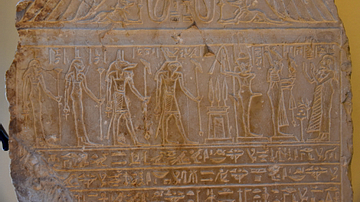
Image
Funerary Stele Featuring Osiris, Min, Horus, Anubis, Isis, and Maat
This detail of a funerary stela depicts Takerseb (extreme right), a priestess of the goddess Min-Re, making an offering to the Egyptian gods and goddesses (from right to left: Osiris, Min, Horus, Anubis, Isis, and Maat). Ptolemaic Period...
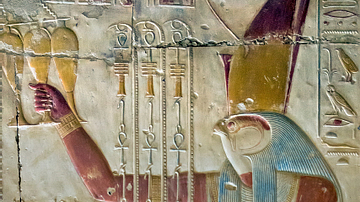
Image
Relief of Horus, Temple of Seti
A section of a relief from a chapel in the Temple of Seti, depicting Horus holding three joined gold vases. Abydos, Egypt. 19th Dynasty (1292-1186 BCE). (Image cropped from original)
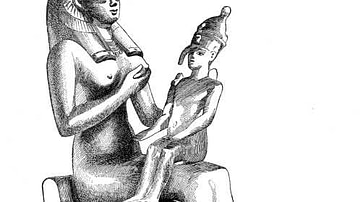
Image
Isis Nursing Horus
Isis nursing Horus. Ptolemaic bronze; in the Louvre. Height, 19 inches.
From A History of Art in Ancient Egypt, Vol. I by Georges Perrot and Charles Chipiez (1883).
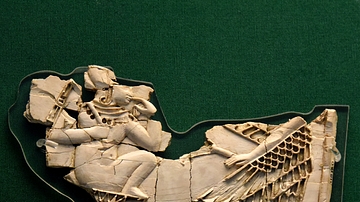
Image
Nimrud Ivory Plaque of the Birth of Horus
On the left is the naked infant Horus sitting on a lotus flower with his finger in his mouth. Facing him is a winged goddess, possibly Isis, who extends a lotus flower towards him. This fine piece was originally inlaid with colored glass...
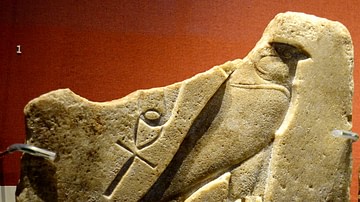
Image
Horus Relief
Quartzite plaque with a sculptor's trial image of the god Horus as a falcon. From Memphis, Late Period, after 700 BCE. (National Museum of Ireland-Archaeology, Dublin, Republic of Ireland)
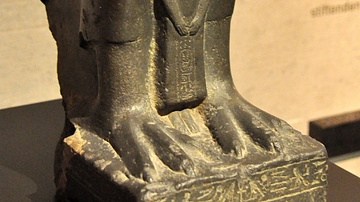
Image
Horus & Nectanebo II
In this greywacke statue, the god Horus (depicted as a falcon; head is lost) protects the praying figure of Nectanebo II. From Memphis, Egypt. 30th Dynasty, circa 350 BCE. (State Museum of Egyptian Art, Munich, Germany).
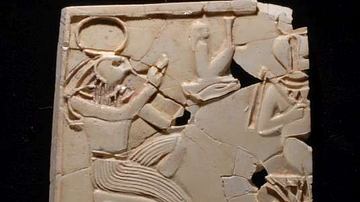
Image
Furniture Inlay Depicting Ra & Horus the Child
Furniture inlay depicting the Egyptian gods Re (Ra) and Horus the child, found in Samaria. Ivory, 9th to 8th century BCE. Israel Antiquities Authority. Copyright, republished with permission.
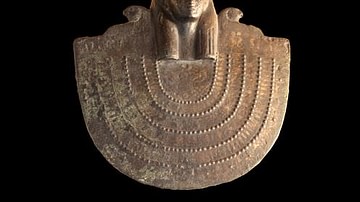
Definition
Neith
Neith (aka Net, Neit or Nit) and is one of the oldest deities of ancient Egypt who was worshipped early in the Pre-Dynastic Period (c. 6000 - 3150 BCE) and whose veneration continued through the Ptolemaic Dynasty (323 - 30 BCE), the last...
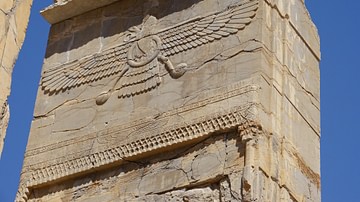
Definition
Faravahar
The faravahar is the best-known symbol from ancient Persia of the winged sun disk with a seated male figure in the center. It is thought to represent Ahura Mazda, the god of Zoroastrianism, but has also been interpreted to signify other concepts...

Definition
Ancient Egyptian Religion
Egyptian religion was a combination of beliefs and practices which, in the modern day, would include Egyptian mythology, science, medicine, psychiatry, magic, spiritualism, herbology, as well as the modern understanding of 'religion' as belief...